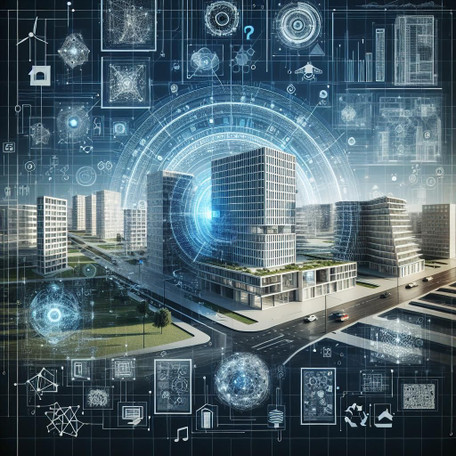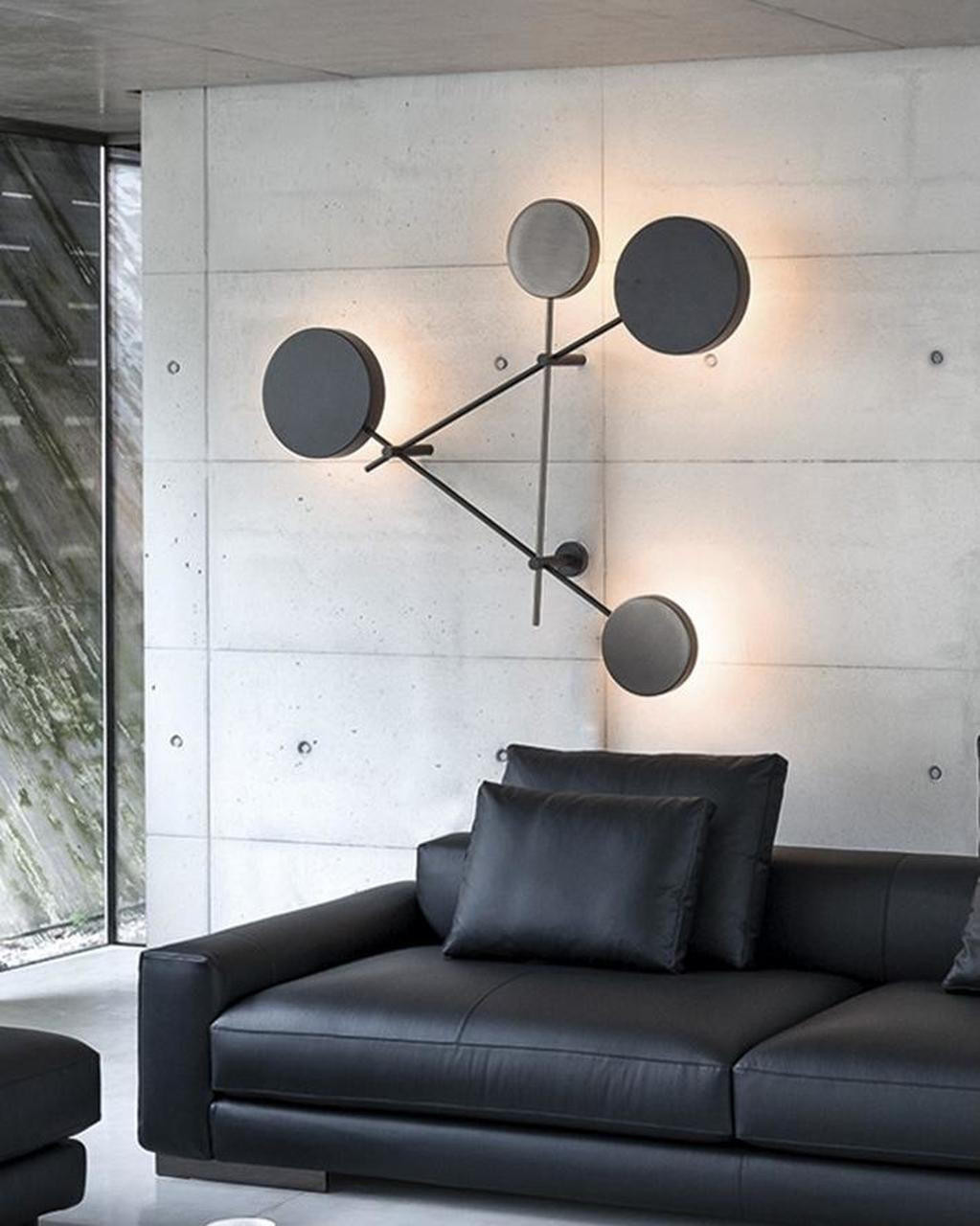The Future of Architecture: Redefining ‘Form Follows Function’ with AI
Posted by Elodie Allington - Architect on 30th Sep 2024
Introduction
In the intricate tapestry of architecture, one guiding principle has long stood as a beacon: Form Follows Function. Originally coined by Louis Sullivan in the late 19th century, this maxim has orchestrated the symphony of design decisions, dictating that the purpose of a building should sculpt its shape. However, as we advance into an era where artificial intelligence (AI) pervades almost every crevice of human endeavor, this cherished dictum finds itself at the crossroads of reinterpretation and refinement. Our architectural landscapes have begun to whisper a new symphony—as AI emerges not solely as a tool but as a collaborator, reimagining the pathways of form, function, and their profound interplay.

The Historical Context of "Form Follows Function"
To comprehend how AI might redefine ""Form Follows Function,"" it is pivotal to revisit its historical roots. Sullivan’s declaration was born during the industrial revolution—a time when functionality had to be crystallized before form could be conceived. It was an era enamored with the practical over the frivolous, the efficient over the elaborate. This philosophy became a cornerstone in modernist architecture, championing structures that were devoid of superfluous embellishments, reflecting a purity honed by utility.
Modernism basked in this ethos, producing monolithic and streamlined designs that echoed the rationalism of the period. In its adherence to functionalism, the movement sometimes alienated the emotional and symbolic dimensions of architecture, drawing criticisms for its sterility. However, with the dawn of AI, this dichotomy between form and function is set to be elegantly bridged, bringing forth a renaissance in architectural expression.
AI: From Tool to Creative Partner
AI, with its vast computational prowess, offers architects notebooks of possibilities previously confined to human imagination. Rather than simply accelerating existing processes, AI serves as a catalyst for innovation. By assimilating extensive data sets, AI can predict, generate, and even simulate forms that harmonize seamlessly with human needs, climate conditions, and urban ecosystems.
Examples of AI in Architecture:
- Generating optimal floor plans tailored to specific use-cases.
- Analyzing environmental impact to create energy-efficient designs.
- Facilitating adaptive structures that respond dynamically to occupant behaviors.
AI’s capability to transcend traditional constraints allows architects to explore complex geometries akin to nature’s architecture—organic forms that seemingly defy gravity and expectation, yet amplify functionality. These designs not only serve their intended purpose but do so in a manner that awakens awe and curiosity. Hence, AI not only models the functional necessities but also tailors the aesthetic journey, proving that where AI meets design, new dimensions of ""Form Follows Function"" arise.
Reimagining Spaces with AI: The Symbiosis of Form and Function
As AI embeds itself into the design process, the question evolves from ""how does the form serve the function?"" to ""how can form and function achieve symbiosis through AI-enhanced design?"" AI’s role transcends computation, birthing collaborative environments where architects and AI feed off each other’s strengths—intuition and analysis, creativity and computation.
Consider the advent of smart buildings, where architecture is infused with technology that reacts to real-time data. Here, function is not a prescriptive outcome but a dynamic interaction. AI augments these structures, facilitating profound learning environments that redefine traditional static spaces, bringing forth:
- Self-regulating energy systems optimizing for sustainability.
- Adaptive layouts with reconfigurable spaces enhancing human-centric design.
- Real-time monitoring of structural health to preemptively address wear and tear.
Each intelligent decision is a manifestation of an AI-empowered philosophy where ""Form Follows Function"" receives its most articulate expression, no longer constrained to rigid interpretations but exploring multi-faceted roles within urban tapestries.
AI’s Impact on Urban Landscape and Cultural Expression
Beyond individual edifices, AI’s footprint extends into urban design—crafting smart cities where infrastructure, form, and function are harmoniously interwoven. This reshaping aligns with sustainable growth, adhering to natural and human-centric patterns that inform more equitable, accessible, and vibrant communities.
AI-generated urban environments are articulated through simulated modeling and predictive algorithms that account for future growth, climate variability, and socio-economic dynamics. The cultural tapestry of our cities is given a modern weave, preserving heritage while nurturing innovation. Hence:
The city becomes not a tapestry overwritten by technological supremacy but a canvas enriched by AI’s embrace.
As AI reimagines infrastructure planning, the balance of public and private spaces shifts towards inclusivity and adaptability. Urban nodes evolve as bio-responsive hubs, offering experiences aligned with continuous insights into cultural dynamics. Therefore, ""Form Follows Function"" in urban design signifies a culturally sensitive equilibrium amplified by AI’s agility.
Ethical Considerations and the Human Touch
While the promise of AI in redefining ""Form Follows Function"" is compelling, ethical contemplations must remain at the fore of our architectural endeavors. It is vital to grapple with the implications of AI’s decisions—most notably, the subtle and sometimes stark removal of the human touch.
Ethics dictates that AI should augment rather than subjugate the human element in design. Its integration into architecture ought to respect privacy, equity, and human integrity. Thus, architects and developers share the onus of crafting transparent, ethical guidelines ensuring AI adheres to principles that respect both viability and humanity.
Extending the Exploration: AI and Sensory Architecture
The integration of AI into architectural design does not simply reshape structures but invigorates the very fabric of how spaces communicate with their inhabitants. This communicates a broader narrative where architecture steps beyond static utility to embrace a sensory dialogue between environment and occupant.
AI's role in augmenting sensory architecture has begun to chart new terrains. By tapping into data from an array of sensors, architectures can dynamically adjust to mood, light, weather, and personal preferences. Picture a world where buildings are not merely inhabited but experienced as living entities—reactive and engaging. This adds layers of ""Form Follows Function"" that go beyond traditional frameworks:
- Environments that adjust light and acoustics to complement the activities within.
- Facades that shift color and transparency based on external conditions and internal moods.
- Spaces that evolve with time, offering personalized experiences based on predictive occupant patterns.
Such advancements elevate the form-function debate to unforeseen levels where the architecture is empathetic, aligning closely not only to physical needs but also the emotional landscapes of its users.
AI and the Democratization of Design
A profound implication of AI in architecture is the democratization of design. By leveraging AI technologies, design processes become more inclusive, inviting engagement from a broader span of voices. AI tools empower communities with limited resources to partake in the design of their environments, thus ensuring that ""Form Follows Function"" embraces communal ideals and diverse functional narratives.
Community-driven AI applications enable:
- Collaborative platforms for participatory design, aligning with specific community cultures and needs.
- Resource-efficient simulation tools accessible beyond elite circles, championing sustainable development.
- Design interfaces that educate and involve end-users, transforming passive occupants into active contributors.
This human-centric approach powered by AI nurtures environments that reflect myriad identities and contexts, reinforcing architecture as a profoundly participative endeavor.
Concluding Thoughts
In the advent of AI, the age-old tenet of ""Form Follows Function"" is not discarded but rather recast into a vibrant spectrum of possibilities. It remains a pivotal concept, not as a rigid edict but as a versatile framework imbued with AI's imaginative prowess. This reinvention encapsulates both the tangible and intangible qualities of architecture: utility, beauty, symbolism, and cultural resonance.
As we unlock new design paradigms where data enriches intuition, architecture stands at the threshold of its next great evolution. The future, alive with AI-enhanced possibilities, beckons us to imagine beyond constraints, encouraging designs that transcend the ordinary to capture the essence of human endeavor. In this future, ""Form Follows Function"" will not merely guide—it will inspire, inviting us to explore uncharted vistas where form and function unite in a dance choreographed by both human and machine.





